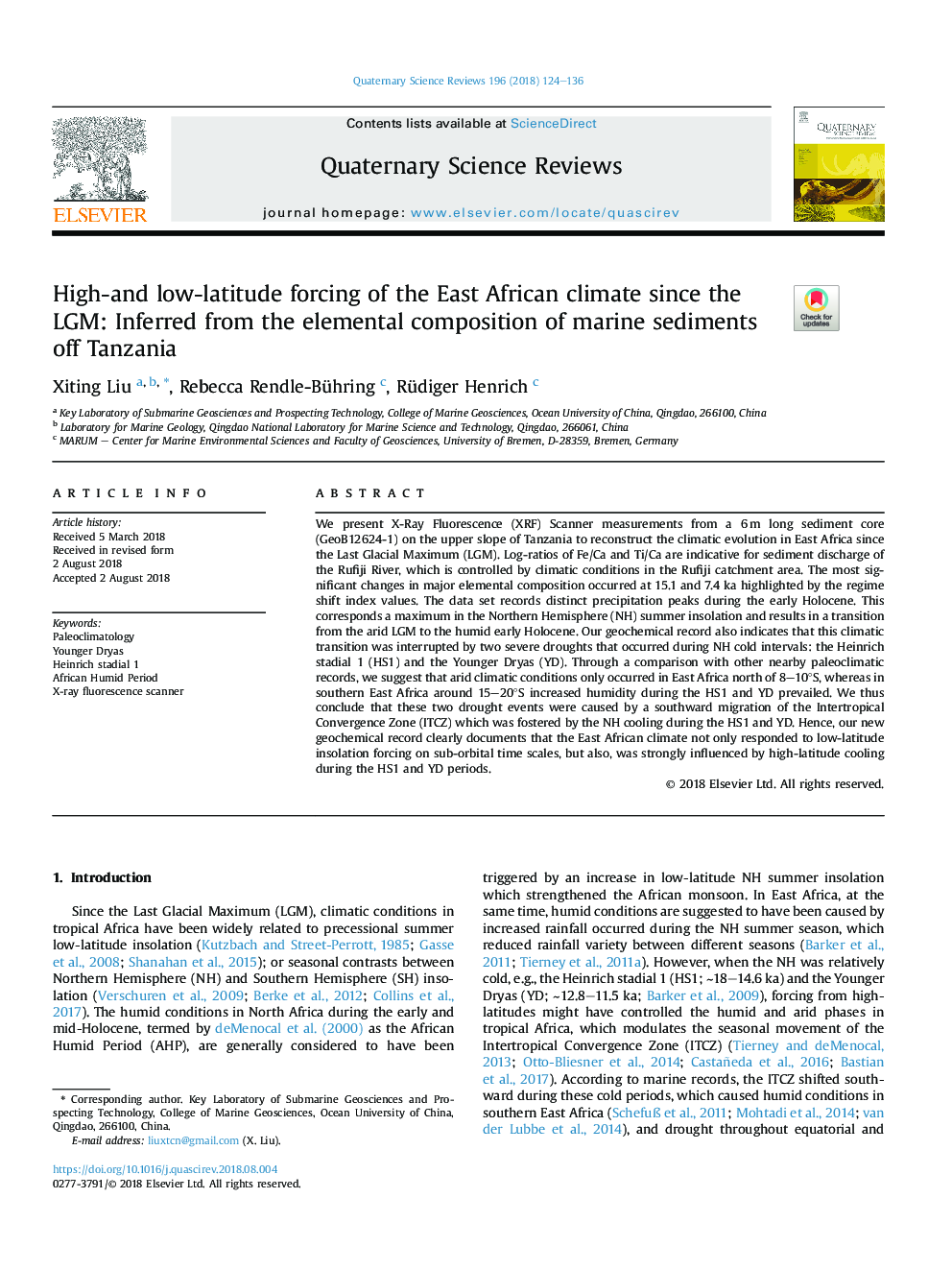| کد مقاله | کد نشریه | سال انتشار | مقاله انگلیسی | نسخه تمام متن |
|---|---|---|---|---|
| 10121002 | 1640739 | 2018 | 13 صفحه PDF | دانلود رایگان |
عنوان انگلیسی مقاله ISI
High-and low-latitude forcing of the East African climate since the LGM: Inferred from the elemental composition of marine sediments off Tanzania
دانلود مقاله + سفارش ترجمه
دانلود مقاله ISI انگلیسی
رایگان برای ایرانیان
کلمات کلیدی
موضوعات مرتبط
مهندسی و علوم پایه
علوم زمین و سیارات
زمین شناسی
پیش نمایش صفحه اول مقاله

چکیده انگلیسی
We present X-Ray Fluorescence (XRF) Scanner measurements from a 6â¯m long sediment core (GeoB12624-1) on the upper slope of Tanzania to reconstruct the climatic evolution in East Africa since the Last Glacial Maximum (LGM). Log-ratios of Fe/Ca and Ti/Ca are indicative for sediment discharge of the Rufiji River, which is controlled by climatic conditions in the Rufiji catchment area. The most significant changes in major elemental composition occurred at 15.1 and 7.4 ka highlighted by the regime shift index values. The data set records distinct precipitation peaks during the early Holocene. This corresponds a maximum in the Northern Hemisphere (NH) summer insolation and results in a transition from the arid LGM to the humid early Holocene. Our geochemical record also indicates that this climatic transition was interrupted by two severe droughts that occurred during NH cold intervals: the Heinrich stadial 1 (HS1) and the Younger Dryas (YD). Through a comparison with other nearby paleoclimatic records, we suggest that arid climatic conditions only occurred in East Africa north of 8-10°S, whereas in southern East Africa around 15-20°S increased humidity during the HS1 and YD prevailed. We thus conclude that these two drought events were caused by a southward migration of the Intertropical Convergence Zone (ITCZ) which was fostered by the NH cooling during the HS1 and YD. Hence, our new geochemical record clearly documents that the East African climate not only responded to low-latitude insolation forcing on sub-orbital time scales, but also, was strongly influenced by high-latitude cooling during the HS1 and YD periods.
ناشر
Database: Elsevier - ScienceDirect (ساینس دایرکت)
Journal: Quaternary Science Reviews - Volume 196, 15 September 2018, Pages 124-136
Journal: Quaternary Science Reviews - Volume 196, 15 September 2018, Pages 124-136
نویسندگان
Xiting Liu, Rebecca Rendle-Bühring, Rüdiger Henrich,